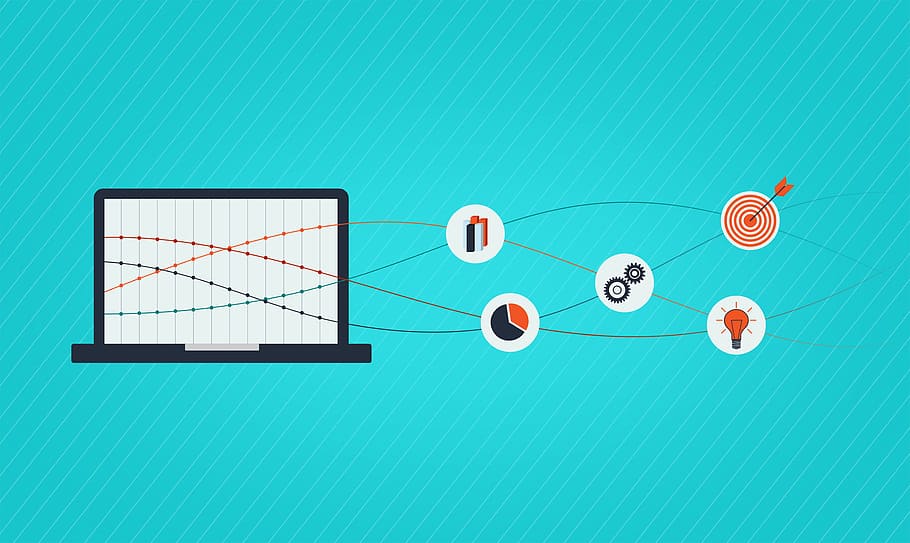Evaluating the current position of your brand in the market is referred to as brand audit. It allows you to identify your strength and realize the business opportunities around you. It also requires you to compare your current efforts with your competitors. Auditing your brand helps you assess the health of your company. It will provide you with comprehensive insights to refine and implement your various business methodologies and increase your company’s overall results.
A Complete Guide on the Components of Brand Audit

Conducting this business procedure will help you experience the benefits of brand audits since it allows you to gather data that improve your business strategy. This process aims to help you determine your current standing in the industry and build better approaches to enhance your branding further. It enables you to explore all the possible expectations of the customers and align your service, products, values, and ethics that will make your company more endearing to your target market. Auditing also involves the evaluation of your social media efforts and presence. It helps you determine the best channels where you should conduct all your activities.
Learning how to do a brand audit will compel you to perform a SWOT analysis to be more aware of your company’s strengths and weaknesses. It also involves sentiment analysis, which we’ve already discussed before. Sometimes, the company can hire an external firm to perform this auditing to prevent any bias. Nonetheless, you can still perform this procedure personally if you want to save some cash.
What is Brand Audit?

We’ve already discussed that brand audit is about examining your current position in your market, assessing the effectiveness of your marketing strategy, and comparing your company with your competitors. However, it is more than just that. This business procedure will help you determine your target audience, encourage loyalty with your existing customers by tailoring your products and services according to their pain points, improve your business reputation, and boost your company’s ROI.
Why Should You Conduct a Brand Audit?

To experience the benefits of brand audit, a comprehensive brand audit is necessary. At first, some businesses may think of this as an unnecessary process. There is a need to analyze a great deal of data and have a more in-depth look at the presence and reputation of your brand. This business process is necessary to develop a solid brand that will save you from crisis and help you gather more profit. It enables you to bolster your brand awareness, directly translating to an improved bottom line.
Know that the more established brand in the market will have a lower cost per customer acquisition. The chance of retaining your customers is also higher since people will be loyal to the brand they are familiar with. People will also choose the brands where they had a positive interaction. All the components of brand audit are necessary to develop a healthier brand.
How to do a Brand Audit Process?

The brand auditing process involves two parts; the external and internal audit. There are instances when a company will choose only one aspect, but most of the time, companies will combine them. It will provide them with an all-encompassing view of their business reputation and presence. However, understand that it can be a time-consuming process.
Start By Building the Framework

Before you can even start collecting data and performing an intensive analysis, you must first understand the parts you need to cover. Perhaps you want to focus more on external factors. Maybe you want to know how the company’s infrastructure performs compared to your objectives. Or you are probably more interested in spying on your competitors. You need to put all the components of brand audit in one document to make everything accessible. You should have a clear insight into your goals and how you plan to approach the solution. We do not necessarily require formal paperwork. You can also choose the one that is suitable for you. Some people may choose to use an Excel table, but storyboarding and mind-mapping work just fine. You can even share the documents with your team members using a Google sheet.
Analyzing the Analytics

It is extremely essential to have clear insights into your website analytics. Google Analytics is a mine of crucial information that you will need to perform the brand audit. You can do this twice a week or depending on the nature of your business. If you target a certain geographical location, it is imperative to pay attention to your information source. If you are not getting the traffic from your desired location, you may need to adjust your strategy. When checking Google Analytics, check your website’s bounce rate. A 20%-30% bounce rate would be a good indication that you have a collection of informative content. 40%-50% is average. Anything higher than that should be alarming. A high conversion rate would mean that there is something wrong with your website.
Another factor to consider in your web analytics would be the conversion rate. This will help you uncover the effect of your content marketing campaign. It will help you understand which of your content is capturing the interest of your audience. You should also know the page that is receiving the highest organic traffic. With a brand audit, you will learn how to diversify the content of your website and the source of your traffic. You want to make sure that your website will be immune to any changes in the algorithms.
Reach out to Your Target Audience

Another mine of information would be your audience. No one knows your company better than your customers. There are different ways how you can collect these information. You can run a contest, a survey, or reach out to them through the phone. These are qualitative evidence that you can combine with the hard data you’ve collected. Your customers can provide you with solutions that you can’t find in data analytics. For instance, you can determine how satisfied they are with your service and their reason for choosing you over your competitors.
Perhaps you are also aware of the Mystery shopper strategy that some businesses use. You can apply the same process to your brand audit. Try to ask some random testers to check the performance and usability of your site and provide feedback. You should also not disregard some of the key factors such as general performance, privacy setting, and website security. When asking them to complete a survey, keep the question, which also requires a short answer. This increases the completion rate.
Analyzing Your Sales Data

Your sales pipeline can help you identify the reasons discouraging the customers from making a purchase. You will be able to formulate solutions that will overcome these issues. For instance, you may notice that you have many abandoned carts, or your audience may have been stuck on your package plan page. When you learn how to do a brand audit, you will learn the reason behind this. Perhaps there are some missing information such as the benefits and the features of your products. Fixing the description will lead to an increase in the conversion rate.
Collecting Social Analytics

The data you can gather from social media is also needed before you can realize the benefits of brand audit. It helps you gain direct access to the customer insights that will often be unavailable in other sources. Using a monitoring tool, collecting all the key data is a lot easier. You have all the information you will need at a click of a button. Here are some information that you can gather from social media.
The Context of Conversations
When conducting a brand audit, it is extremely important to understand the general context behind the conversations happening on social media. You will understand how people have become associated with your brand. For instance, if they discovered your website through an advertisement or a recommendation.
Sentiment Analysis

Sentiment Analysis helps you understand how the public perceives your company. It gives you a slight hint on the state of your brand reputation. Furthermore, you will immediately understand the features of your product that captured the interest of your audience. This method is a step ahead of social listening since you will instantly know whether they say positive or negative things about your company.
Look for Influencers

Your social listening tool can help you look for influencers who are relevant to your brand. Understand that these are people who can help you with your marketing and branding campaign. Some people may think that influencer marketing is not one of the components of brand audit. Nonetheless, the process of how you communicate your brand to the public is a part of the audit.
Monitoring Your Rivals

Internet monitoring is also an essential part of a brand audit. You can also use this to monitor the campaign of your competitors. You can determine what their customers say about them, particularly their weaknesses. Take advantage of this to steal the leads and gain the trust of these customers. You can reach out to those leads and tell them that you can offer a better job but in a more subtle way. Otherwise, you will sound like a pushy salesman.
There are many benefits of brand audit. Using simple tweaks, it helps you gather important data and improve your brand reputation and awareness. It enables you to communicate seamlessly with your target audience using a more refined marketing tactic. Your company can use this as a guideline for future product releases. Most companies will also use this strategy to determine an appropriate unique selling proposition and the strength of their brand. With social monitoring, you can determine the thoughts of your target audience and boost their customer satisfaction by offering a solution that deals with their pain points.
Tags: brand awareness, reputation management